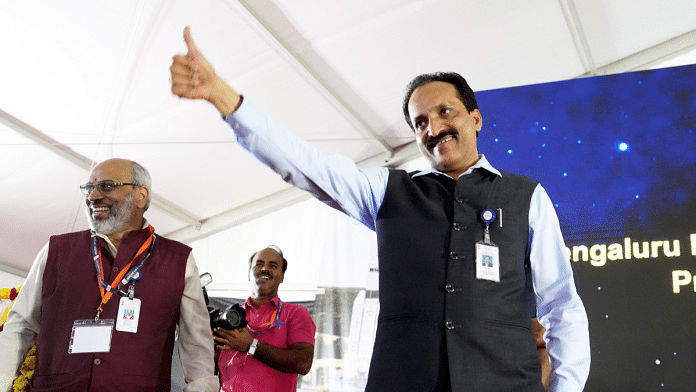New Delhi: Even as Indian Space Research Organisation (ISRO) garners adulation for successful landing of Chandrayaan-3, the wheels of the next phase of the lunar exploration have already been set into motion with the rollout of the Pragyan Rover.
At 6:04 pm Wednesday, Chandrayaan-3’s Vikram Lander entered an unchartered territory, becoming the only country to successfully land on the south pole of the Moon — a cratered-region that has held interest of astronomers for years because of the presence of water ice.
The landing is a boost for ISRO, which has been working on its moon missions since 2019.
At 10 pm — roughly four hours after the Vikram Lander landed on the Moon — one of its side panels unfolded to create a ramp for Pragyan, a 26-kg six-wheeled rover.
Measuring 0.9 × 0.75 × 0.85 m with ISRO logo embossed on its wheels, the rover moves at a speed of 1 cm/second and will use navigation cameras to scan its lunar surroundings.
The lander and the rover have about 14 days, or one lunar day, to study the Moon’s surface, after which freezing temperatures of minus 238 degrees Celsius in the south pole is likely to destroy the instruments.
But ISRO chairman S. Somanath hopes this can be extended. In an interview with Times of India, he was hopeful that both the lander and the rover will live for another lunar day — or 14 more Earth days.
Also Read: Chandrayaan 1, 2 & 3 — how ISRO used each Moon mission as test for next, more complex expedition
Payloads
Payloads in the lander include the Chandra’s Surface Thermophysical Experiment (ChaSTE) to measure the thermal conductivity and temperature; Instrument for Lunar Seismic Activity (ILSA) for measuring the seismicity around the landing site; Langmuir Probe (LP) to estimate the plasma density and its variations; and a passive Laser Retroreflector Array from NASA for lunar laser ranging studies.
These payloads will measure the near-surface plasma (ions and electrons) density, carry out measurements of thermal properties of the lunar surface, measure seismicity — that the under-the-surface activity — around the landing site and delineate the structure of the lunar crust and mantle.
The rover, meanwhile, has an Alpha Particle X-ray Spectrometer (APXS) and Laser Induced Breakdown Spectroscope (LIBS) to examine the composition of the Moon’s atmosphere and surface. Over the course of the next 14 days, the rover will collect this data and relay it to the lander, which will, in turn, send it to the Chandrayaan-2 satellite and beam the data to Earth.
(Edited by Uttara Ramaswamy)
Also Read: Curious about what Chandrayaan-3 aims to do? All about its payloads & how they’ll help scientists



